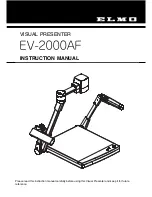
Piranha HS-S0-06K Camera User Manual
Teledyne DALSA
03-032-20213-01
27
Digital Processing
1.
Fixed p attern noise (FPN ) calibration (calcu lated u sing the
com m and ) is u sed to
su btract aw ay ind ivid u al p ixel d ark cu rrent.
2.
Photo-Resp onse N on -Uniform ity (PRN U) coefficients are u sed to correct the
d ifference in resp onsivity of ind ivid u al p ixels (i.e. given the sam e am ou nt of light
d ifferent p ixels w ill charge u p at d ifferent rates) an d the change in light intensity
across the im age either becau se of th e light sou rce or d u e to op tical aberration s (e.g.
there m any be m ore light in the center of the im age). PRN U coefficients are
m u ltip liers an d are d efined to be of a valu e greater than or equ al to 1. This ensu res
that all p ixels w ill satu rate together. When u sing PRN U correction, it is im p ortant
that the A/ D offset and Fixed Pattern N oise (FPN ) or p er p ixel offsets are su btracted
p rior to the m u ltip lication by the PRN U coefficient. The su btraction of these 2
com p onents ensu re that the vid eo su p p lied to the PRN U m u ltip lier is nom inally zero
and zero m u ltip lied by anything is still zero resu lting in no PRN U coefficient ind u ced
FPN . If the offset is not su btracted from the vid eo then there w ill be artifacts in the
vid eo at low light cau sed by the m u ltip lication of the offset valu e by the PRN U
coefficients.
3.
Backgrou nd su btract (
ssb
com m and ), system gain (
ssg
com m and ), and backgrou nd
ad d ition
(
sa
b
) are u sed to increase im age contrast after FPN and PRN U calibration.
It is u sefu l for system s that p rocess 8-bit d ata bu t w ant to take ad vantage of the
camera’s 12-bit digital processing chain. For example, if you find that your image is
consistently betw een 128 an d 255 DN (8-bit), you can su btract off 128 (
ssb 2048
) an d
then m u ltip ly by 2 (
ssg 8192
) to get an ou tp u t range from 0 to 255.
The follow ing section s are organized as follow s:
1.
Setting the Gain.
2.
Calibrating the Cam era to Rem ove N on -Uniform ity (Flat Field Correction )
p rovid es an overview of how to p erform flat field calibration.
3.
Signal Processing p rovid es a d etailed d escrip tion of all d igital p rocessing chain
com m and s.
The algorithm calcu lates the gain of the 16
th
tap to set the tap m ean to the u ser target. For
ad jacent tap 15, the m ean of the last 16 p ixels are gained to m atch the m ean of the first 16
p ixels of tap 16. This seam m atching continu es to tap 1.
For ad jacent tap 17, the m ean of the first 16 p ixels are gained to m atch the m ean of the last
16 p ixels of tap 16. This seam m atch ing continu es to tap 30.
Calibrating the Camera to Remove Non-Uniformity
(Flat Field Correction)
Flat Field Correction Overview
This cam era h as the ability to calcu late correction coefficients in ord er to rem ove non -
u niform ity in the im age w hen op erating in TDI Mod e. Th is vid eo correction op erates on a
p ixel-by-p ixel basis an d im p lem ents a tw o p oint correction for each p ixel. This correction
can red u ce or elim in ate im age d istortion cau sed by the follow ing factors:
Fixed Pattern N oise (FPN )
Photo Resp on se N on Uniform ity (PRN U)
















































